Celebrating the Responsible Harvest: Fish for Thought this Thanksgiving
By Jenna Talbott, Alaska Select Representative

Fall is upon us, bringing with it the air and sweet smells of the holidays. Families and friends will gather from near and far over fine food and drink. Yet brewing beneath the cheerful festivities is the subversive perspective of Thanksgiving as a holiday steeped in cultural appropriation and unconscious consumer behaviors. Without delving into the controversies regarding history and the roots of the Protestant tradition, I agree that the holiday's festivities could use some attention and intention to respectfully evoke the spirit of gratitude. The gathering of communities to celebrate the harvest, abundance, unity, and the cycles of life, is an ancient and trans-cultural rite that is as much about the future as it is about the past. So what are we celebrating and what are we evoking? What traditions and symbolism do we pass along?
Inspiration from the Thanksgiving Address
I recently came across a version of “an ancient protocol [that] sets gratitude as the highest priority.” That protocol is widely known as the Thanksgiving Address, and in this case is the version of the native Haudenosaunee. Professor Robin Wall Kimmerer, a botanist of indigenous descent, found that the Haudenosaunee have translated their version into over 40 languages for the purpose of spreading its message. Their version as told to Dr. Kimmerer begins:
“Today we have gathered and when we look upon the faces around us we see that the cycles of life continue. We have been given the duty to live in balance and harmony with each other and all living things. So now let us bring our minds together as one as we give greetings and thanks to each other as People. Now our minds are one.”
Kimmerer notes that beneath the unifying credo is a scientific inventory of ecosystem services. One example of the many-parted pledge is:
“With one mind, we honor and thank all the Food Plants we harvest from the garden… Since the beginning of time, the grains, vegetables, beans, and fruit have helped the people survive. …We gather together in our minds all the plant foods and send them a greeting and thanks.”
While "thanksgivings" (or “friendsgivings”) are largely about communion, the meal itself is representative of the harvest and abundance being celebrated. If we were to be in step with the spirit of the Thanksgiving Address, our traditional meal would serve as our own modern inventory of that which sustains us.

The Turkey as a symbol in 2021
How the turkey became the symbol and staple of the national Thanksgiving holiday is less confusing than how Santa Claus became the father of Christmas, but is still controversial. Regardless of what bird was served at that dinner table in 1621, it wasn’t the turkey we find in stores today. Our current mainstream domestic turkeys have been selectively bred for rapid growth of breast tissue, resulting in a bird whose life span is only a couple years due to the inability of their organs and skeletons to keep up with their outsized exteriors. These heavy-chested birds cannot fly or mate naturally, which is why they are physically man-handled through the process of artificial insemination. Over 245 million turkeys are raised for consumption every year--46 million of which are produced for Thanksgiving rituals alone.
To meet “free range” label requirements, modern turkey farms must present the ratio of 2 square feet per bird. As a result of birds pecking and clawing at each other in their close proximity, it is a common preventative practice to cut off their beaks, claws, and snoods, which makes them susceptible to infection. As a result, the industry is dependent on high levels of antibiotics, one of many health issues that continues to raise concern for the implications of the meat.

The Address includes: “We turn our thoughts to all of the Fish life in the water. They were instructed to cleanse and purify the water. They also give themselves to food. We are grateful that they continue to do their duties and we send to the Fish our greetings and our thanks.”
While communities across the nation are bound to relate to different narratives as a result of varying ecosystems and histories, we are also united through the resources and responsibilities we share. Wild Alaskan salmon has become one of our country’s most precious resources (pure sustainable protein) and one of its most significant narratives (responsible stewardship). Salmon is our most abundant source of what New York Times journalist Paul Greenburg calls “the last wild food,” and is already an ancient symbol of abundance, fertility, prosperity, and renewal.

The Responsible Harvest
Bristol Bay, Alaska: the world's largest most sustainable sockeye salmon fishery
Wild Alaskan salmon venture out into the oceans and return to the rivers and streams where they were born--completing a cycle of life with one last push to reproduce. They sacrifice their bodies for the journey back into freshwater. When salmon return home to spawn, they return to die. Nutrients from their bodies are found in the trees and vegetation along abundant waterways--unless they are harvested by fisherfolk, in which case their nutrients can be found sustaining families and communities across the nation (and around the globe).
Conclusion
By intentionally supporting sustainable practices in our wild salmon industry, we are voting to protect our nation’s natural resources, which are under constant threat by a myriad of short-sighted endeavors. By honoring salmon as an ancient symbol of abundance and renewal, we put value on the cycles of life, and in turn, celebrate our own role in stewarding our modern world.
Whatever our "thanksgiving" sentiments are, may our traditions show respect for that which has sustained us in the past and a reverence for that which sustains us still—for an abundant future is worth celebrating responsibly today.

Jenna Talbott is an Alaska Select representative and member of the Bristol Bay fishing community as of 2018.
